A chord's name is comprised of it's letter name, either A, B, C, D, E, F, or G and it's type information symbols which encapsulates the instructions for building a chord.
A chord's name is comprised of it's letter name, either A, B, C, D, E, F, or G and its chord type information symbol which encapsulates the instructions for building a chord.
C, C-, C°b9#5, CmL7
The names of chords that we encounter today are a modern construct and based chords built using intervals of thirds and their inversions. What follows in this lesson is the common and not so common names.We'll even through in a few NOT chord names.
With a foundation of how these chords are used, harmonically, one should be able to figure out any name or names not found on this list.
- The capital letter, A, B, C, D, E, F or G is the Root or letter name of the chord.
- The chord designation (*for chords based on thirds), chord type follows based on its basic triad type: Major, Minor, Diminished or Augmented. A major designation is not required for triads as this is the default chord type and the most common chord type. 4-part chords require a 7th (seventh) designation or the highest upper partial or extension ( 9, 11, 13 ) above the seventh. maj7, m7, °7, +7, maj9, m9, 11, 13, etc...
- Followed by any alterations ( b5, #5, b9, #9, #11, b13 ) or added pitches. These can be in parentheses 9(#5) 13(b5) indication optional alterations, ...
* Our Western Harmony is overwhelming based on the interval of a third for building chords.
Chord Type
Common Chord Symbols using a C root as examples.
Major
CM, Cmaj, CMAJ, CΔ
Major is the most common chord and by default the maj or major part of the chord is rarely written or even pronounced.
The capital “M” should be avoided. Especially in its handwritten form as it is hard to distinguish between an uppercase M
and the lowercase m
for a minor chord.
When a major seventh interval is used with a minor triad the designation maj7 or L7 is added" Cmmaj7, CmL7. The L
indicates a I seventh, i.e., major seventh. This is not a common notation, but very useful shorthand when writing chords.
Minor
Cm, Cmin, C-
Diminished
Cdim, C°
Augmented
Caug, C+
add
C add2, Cadd9
add refers to adding a note to the base chord. The add is typically used with major and minor chords and represented as a number referring to the interval of the note from the chord’s corresponding scale to add to the chord.
The most common add note is a 9
or 2
.
sus
Csus, Csus4, C7sus4
sus implies the suspension of the third of a major, minor or seventh chord.
sus2 implies to substitute a second for the thirds. Traditionally NOT a true suspension or sus but a 5add2 chord (see Power 5 below).
Power 5
C5
Technically not a true chord and in the traditional sense, it can be argued that it doesn't qualify as a true chord since it consists of two notes played together or almost together, rather than the required three or more. Instead, it can be viewed as a dyad or interval with an additional note.
Seventh
C7, Cdom7
Often called a Dominant Seventh Chord chord.
Dominant is a chord function and not a type. See the following lessons:
- Dominant Seventh Chords? • When is a Dominant Seventh Chord not A Dominant Seventh Chord.
- Secondary Dominant V of ...
NOT
C2, Csus2
Traditionally with chords built in thirds a sus
refers the a suspended or suspension. Which is the third being replaced with the fourth of the chord. Traditionally is resolved, the fourth to the third. In contemporary music, we the listeners. have accepted that it no not resolve. Replacing the third with a second is NOT a suspension with chords based on the traditional triads built in thirds.
So what is the chord name? It's a dyad, a two note C5add2.
For a really through chart on building chords and the chord symbols used above, visit: A Guide to Advanced Chord Series - Chord Building Chart page.
Related Lessons, Videos, Lesson Series, Songs, Books & Reference Charts, Resources & Assets, Workshops are below.

This series of lessons will allow you finally, to check that Reading item off your music To Do list. Learning to read standard music notation opens a world of music to you. Music notation is the Lingua franca of amateur and professional musicians alike.
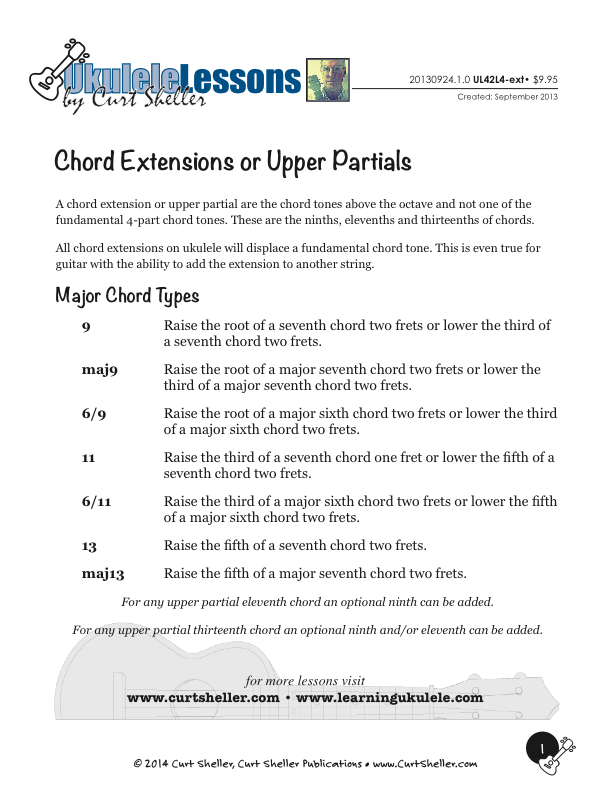
A chord extension or upper partial are the chord tones above the octave and not one of the fundamental 4-part chord tones. These are the ninths, elevenths and thirteenths of chords. All chord extensions on ukulele will displace a fundamental chord tone. This is even true for guitar with the ability to add the extension to another string.

Harmonic Analysis is the understanding of the functional sequence of chords. It is the process used to analyze the harmonic structure of a progression, song or composition. This analysis is then used to make scale selections for improvisation and chord substitution.
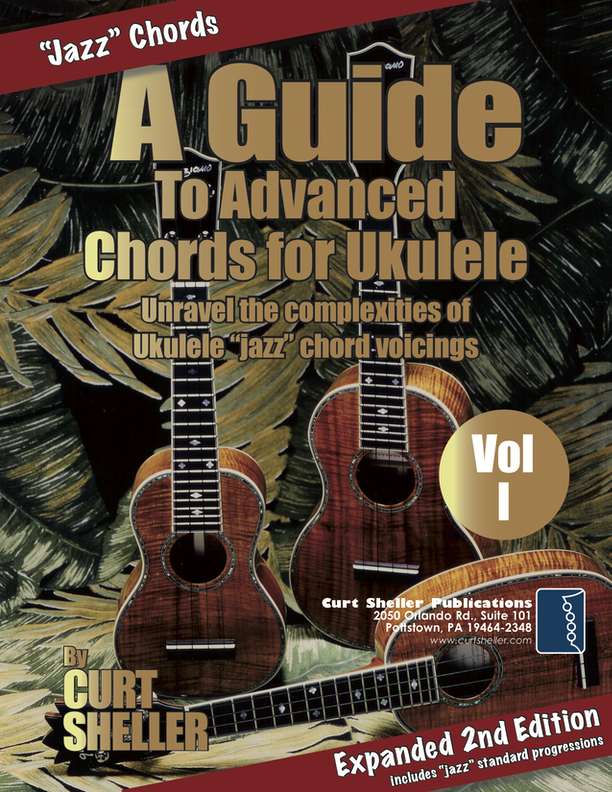
Beyond learning basic Ukulele chords, most players struggle with advanced chords. Commonly called "jazz" chords, these more sophisticated voicings find a wide use in all forms of music. A Guide to Advanced Chords for Ukulele - presents a highly organized and efficient approach to the mysterious subject of advanced chords. Chord dictionaries are not the answer.
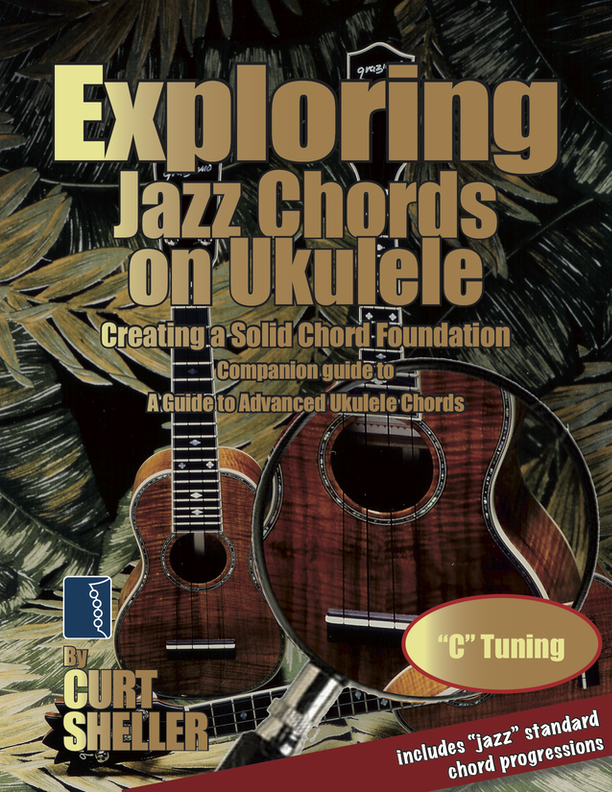
Exploring jazz chords using a variety of common chord progressions based on songs from the standard jazz repertoire. Core Chords are the basic set of chords needed to play a wide range of music, in a variety of styles. This set of chords includes basic open position chords, basic movable form chords and the core 4-part "jazz" chords.
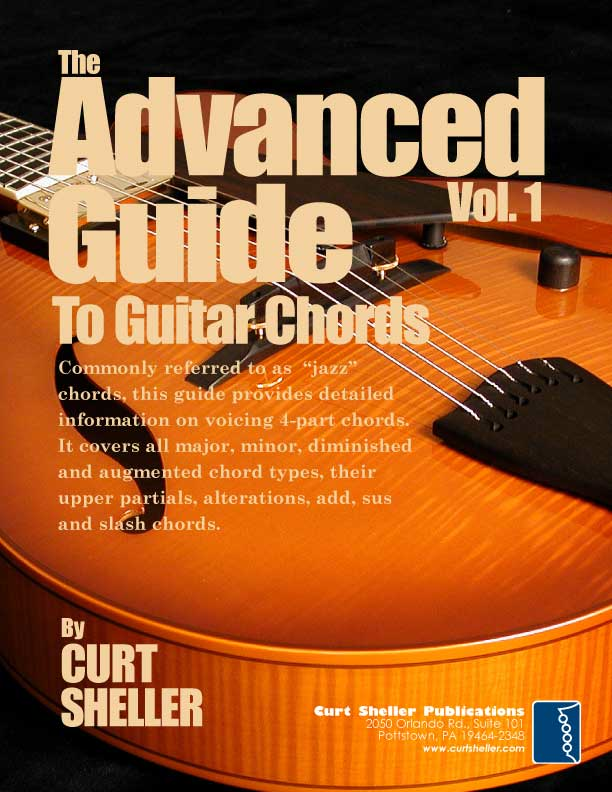
Commonly referred to as jazz chords, this book provides detailed information on voicing 4-part chords. Covers common string families. Beyond learning open and barre chords, most guitarists struggle with advanced chords. Commonly called "Jazz" chords, these more sophisticated voicings find a wide use in all forms of music.

Finally, learn the names of the notes of the ukulele fingerboard in C tuning .

Learn the six fingering principles to navigating the ukulele fingerboard. Fingering is one of the most universal topics. Book: Six Secrets of the Ukulele Fingering

Harmonic Analysis is the understanding of the functional sequence of chords. It is the process used to analyze the harmonic structure of a progression, song or composition. Book: Harmonic Analysis for Scale Selection and Chord Substitution

Learn to read single note melodies in the first/open position is a lot easier than you might think. Book: Ukulele – Reading Music Series – Primer

An organized collection of daily practice and reference material for the contemporary ukulele player for developing the vocabulary and knowledge necessary for single note playing. Book: Daily Practice Material for the Contemporary Ukulele
Checkout the Books & Reference Charts for additional Handy, Dandy Reference Charts.

Ukulele Fingerboard Chart for C Tuning, Low or High G – G C E A

Ukulele Fingerboard Chart for G Tuning, Low or High A – D G B E

A handy reference chart of all 15 major and relative minor key signatures. US Letter 8.5 x 11 sized (ANSI-A), A4
Checkout the Books & Reference Charts for additional Handy, Dandy Reference Charts.




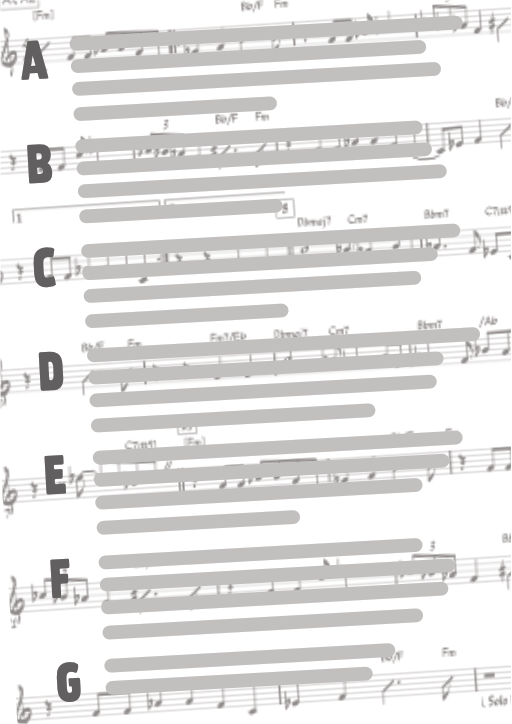
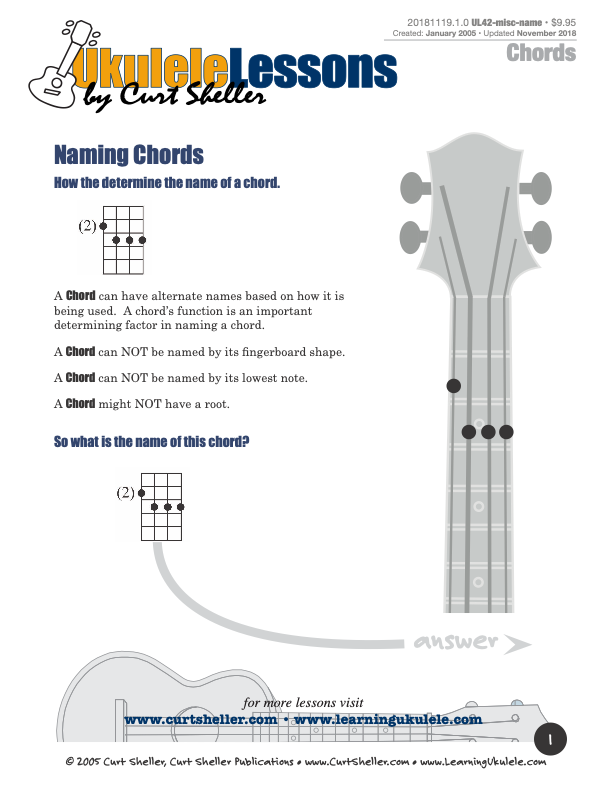
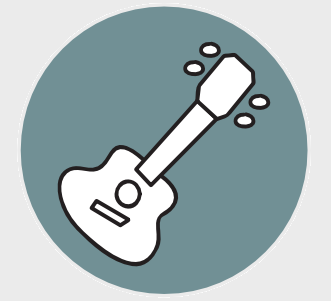

.jpg)